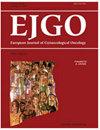Bioinformatics analysis of the diagnostic significance and functions of RDH5 in breast cancer
IF 0.5
4区 医学
Q4 OBSTETRICS & GYNECOLOGY
引用次数: 0
Abstract
Objective: RDH5 (Retinol dehydrogenase 5) is one of the member of the short-chain dehydrogenase/reductase (SDR) family and plays a critical role in a variety of tumor processes. In this study, we analyzed the expression, diagnostic significance and gene function of RDH5 in breast cancer. Methods: The Gene Expression Profiling Interactive Analysis (GEPIA) database was used to determine the diagnostic and prognostic value of RDH5 and the University of Alabama at Birmingham (UALCAN) database analyzed its expression in different subtypes, clinical stages and altered signal pathways in breast cancer. Then we explored the co-expression gene of RDH5 in breast cancer and constructed its corresponding network through the cBioPortal database. The String database was used to determine its interactions with other proteins. Results: RDH5 expression was differentiated in various tumours compared to normal tissue, and was down-regulated in breast cancer tissue and different subtypes of breast cancer. There was no correlation between RDH5 and the survival of breast cancer. RDH5 expression was significantly associated with different clinical parameters. Additionally, the protein expression of RDH5 in breast cancer with altered pathways indicated it was closely associated with the SWI-SNF (switching/sucrose non-fermenting) complex status and the mammalian Target of Rapamycin (mTOR), WNT (Wingless/Integrated), MYC/MYCN (Myelocytomatosis oncogene/euroblastoma derived MYC), RTK (receptor Tyrosine kinases), and p53/Rb (tumor protein p53/Retinoblastoma) pathways. Interaction analysis with RDH5 and its co-expression genes showed that its main related functions were ethanol oxidation, regulation of heart contraction and negative regulation of tumor necrosis factor. Lastly, the Protein-protein interaction (PPI) of RDH5 showed that the most relevant Kyoto Encyclopedia of Genes and Genomes (KEGG) pathways were retinol metabolism, vitamin digestion and absorption and metabolic pathways. Conclusion: These results implied that RDH5 might be a larvaceous diagnostic biomarker for breast cancer and was closely associated with its metabolism. However, more studies are needed to confirm our findings and support the clinical importance of RDH5 in breast cancer.RDH5在乳腺癌诊断意义及功能的生物信息学分析
目的:RDH5 (Retinol dehydrogenase 5)是短链脱氢酶/还原酶(SDR)家族成员之一,在多种肿瘤过程中起关键作用。本研究分析RDH5在乳腺癌中的表达、诊断意义及基因功能。方法:采用基因表达谱交互分析(GEPIA)数据库确定RDH5的诊断和预后价值,阿拉巴马大学伯明翰分校(UALCAN)数据库分析RDH5在乳腺癌不同亚型、临床分期和信号通路改变中的表达。然后我们通过cBioPortal数据库探索RDH5在乳腺癌中的共表达基因,并构建相应的网络。String数据库用于确定其与其他蛋白质的相互作用。结果:与正常组织相比,RDH5在各种肿瘤中表达均有分化,在乳腺癌组织及不同亚型乳腺癌中表达均下调。RDH5与乳腺癌的生存率没有相关性。RDH5表达与不同临床参数有显著相关性。此外,RDH5在通路改变的乳腺癌中的蛋白表达表明,它与SWI-SNF(开关/蔗糖非发酵)复合物状态以及哺乳动物雷帕霉素靶蛋白(mTOR)、WNT(无翼/整合)、MYC/MYCN(髓细胞瘤癌基因/神经母细胞瘤衍生MYC)、RTK(受体酪氨酸激酶)和p53/Rb(肿瘤蛋白p53/视网膜母细胞瘤)通路密切相关。与RDH5及其共表达基因的互作分析表明,其主要相关功能为乙醇氧化、调节心脏收缩和负调控肿瘤坏死因子。最后,RDH5蛋白-蛋白相互作用(PPI)表明,与京都基因基因组百科全书(KEGG)最相关的途径是视黄醇代谢途径、维生素消化吸收途径和代谢途径。结论:RDH5可能是一种重要的乳腺癌诊断生物标志物,与RDH5的代谢密切相关。然而,需要更多的研究来证实我们的发现,并支持RDH5在乳腺癌中的临床重要性。
本文章由计算机程序翻译,如有差异,请以英文原文为准。
求助全文
约1分钟内获得全文
求助全文
来源期刊
自引率
25.00%
发文量
58
审稿时长
1 months
期刊介绍:
EJGO is dedicated to publishing editorial articles in the Distinguished Expert Series and original research papers, case reports, letters to the Editor, book reviews, and newsletters. The Journal was founded in 1980 the second gynaecologic oncology hyperspecialization Journal in the world. Its aim is the diffusion of scientific, clinical and practical progress, and knowledge in female neoplastic diseases in an interdisciplinary approach among gynaecologists, oncologists, radiotherapists, surgeons, chemotherapists, pathologists, epidemiologists, and so on.

 求助内容:
求助内容: 应助结果提醒方式:
应助结果提醒方式:


